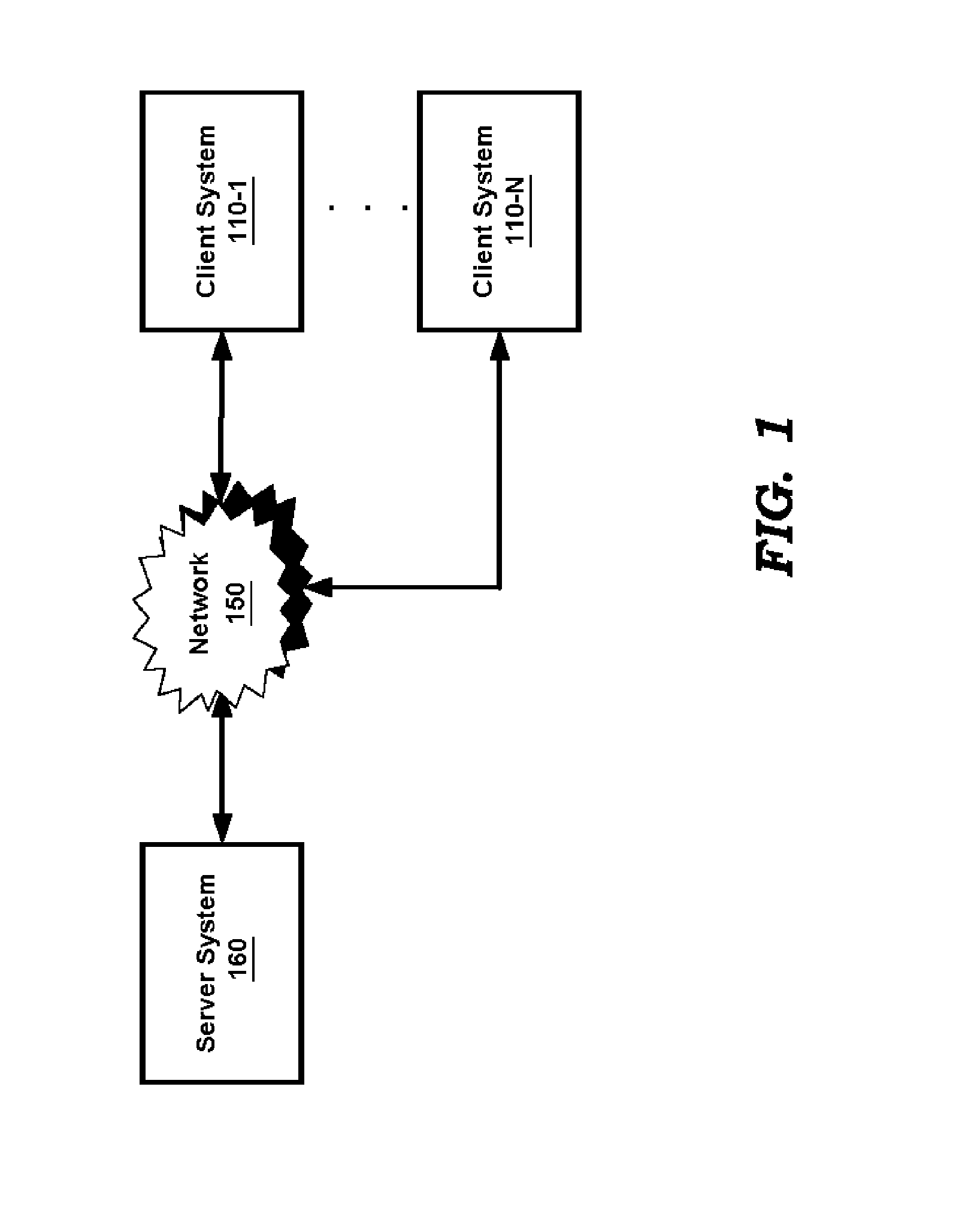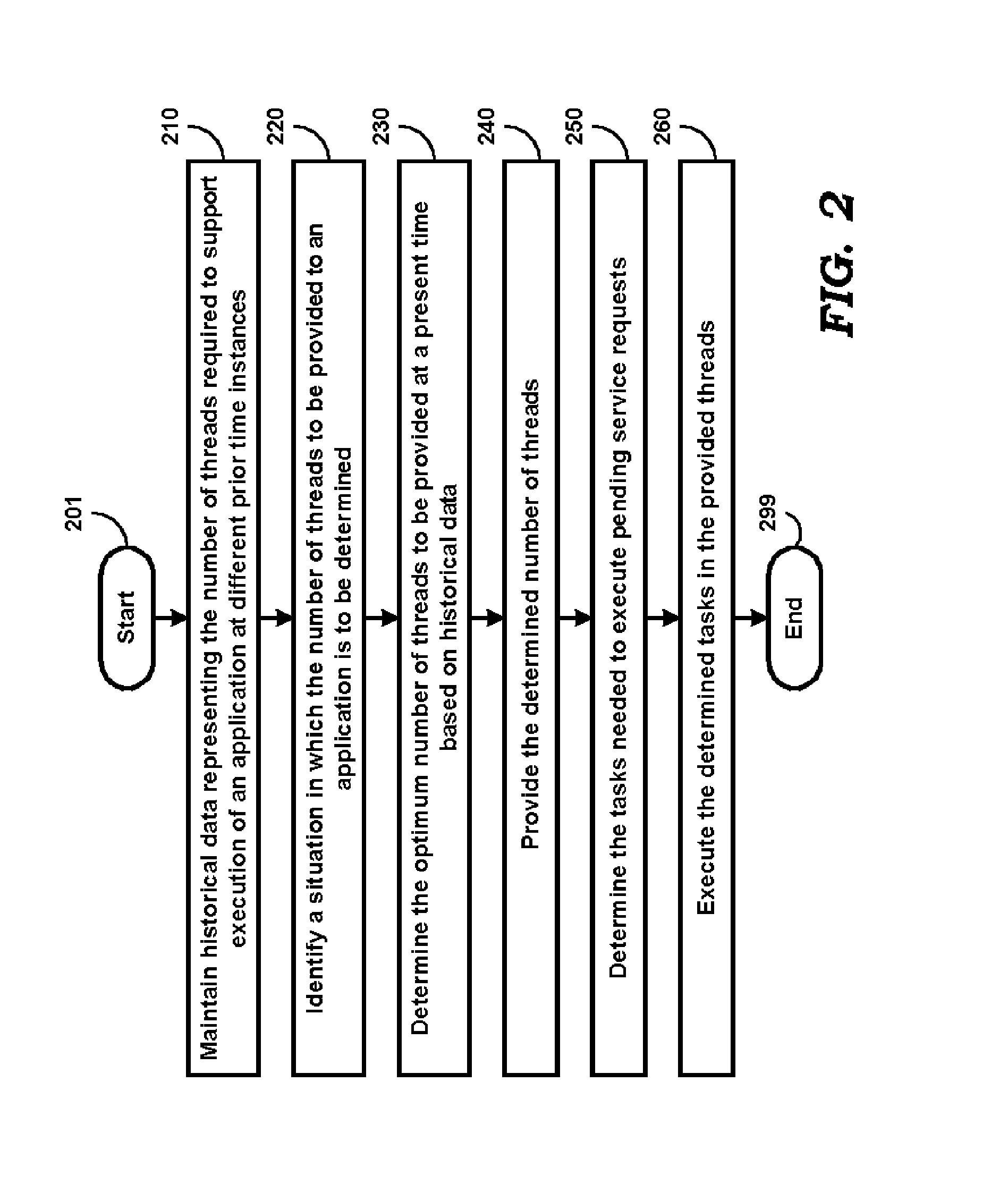Providing Optimal Number of Threads to Applications Performing Multi-tasking Using Threads
a multi-tasking, thread-based technology, applied in multi-programming arrangements, data acquisition and logging, instruments, etc., can solve the problems of memory overhead, unneeded overhead in creation and termination of threads, and high response times
- Summary
- Abstract
- Description
- Claims
- Application Information
AI Technical Summary
Problems solved by technology
Method used
Image
Examples
Embodiment Construction
[0016] 1. Overview
[0017] According to an aspect of the present invention, historical data indicating the number of threads required to support execution of an application at various prior instances of time is maintained, and the data is used to determine the number of threads to be made available to the application at a present instance of time. Due to the use of such historical data, an optimal number of threads may be provided to the application at any instance of time.
[0018] Various aspects of the present invention are described below with reference to an example problem. Several aspects of the invention are described below with reference to examples for illustration. It should be understood that numerous specific details, relationships, and methods are set forth to provide a full understanding of the invention. One skilled in the relevant art, however, will readily recognize that the invention can be practiced without one or more of the specific details, or with other methods,...
PUM
 Login to View More
Login to View More Abstract
Description
Claims
Application Information
 Login to View More
Login to View More - R&D
- Intellectual Property
- Life Sciences
- Materials
- Tech Scout
- Unparalleled Data Quality
- Higher Quality Content
- 60% Fewer Hallucinations
Browse by: Latest US Patents, China's latest patents, Technical Efficacy Thesaurus, Application Domain, Technology Topic, Popular Technical Reports.
© 2025 PatSnap. All rights reserved.Legal|Privacy policy|Modern Slavery Act Transparency Statement|Sitemap|About US| Contact US: help@patsnap.com



